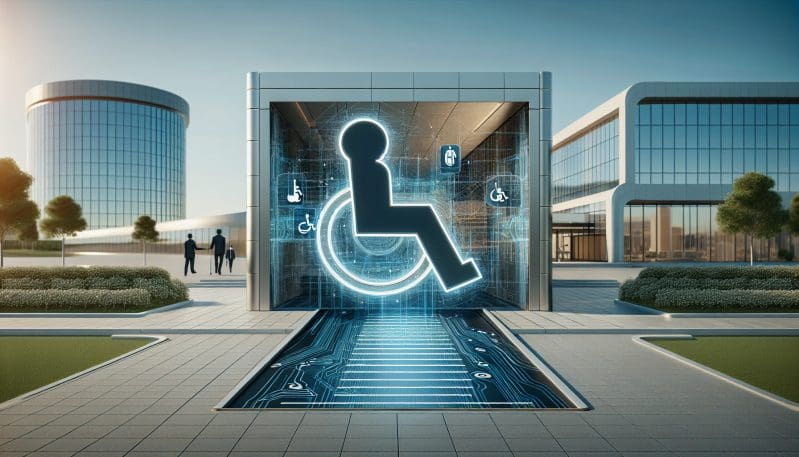Integrating Disability Inclusivity into the Future of Work: Beyond Ramps and Restrooms
- Home
- Integrating Disability Inclusivity into the Future of Work: Beyond Ramps and Restrooms

- Editors Desk
- January 12, 2024
- 0 Comments
As we edge closer to the future of work, a paradigm shift is required in how we perceive and implement disability inclusivity within the workforce. The conversation must evolve from mere compliance to encompass a holistic embrace of diversity that includes but is not limited to physical adjustments like ramps and restrooms. Here at No Worker Left Behind, we are passionate about paving the way for an inclusive future that celebrates every employee’s unique abilities and creates opportunities for all to thrive.
The first step towards this vision is acknowledging that physical infrastructure, while crucial, is just the starting point. A truly inclusive environment recognises the varying needs of individuals with disabilities and integrates this understanding into every facet of the workplace.
**Technology as an Enabler
In today’s digital age, technology is a great equalizer. Assistive technologies, such as speech-to-text software, screen readers, and adaptive hardware, can create more accessible work environments for those with visual, auditory, or physical disabilities. However, going forward, companies must also anticipate future technological needs and work towards developing intelligent systems that are inherently accessible, rather than adapting existing systems as an afterthought.
**Inclusive Hiring and Career Advancement
The employment cycle, from recruitment to retirement, should reflect a commitment to inclusiveness. This means crafting job postings that are welcoming to candidates with disabilities, offering flexible interview formats, and providing on-the-job support through mentoring and tailored professional development opportunities. Promoting from within and identifying career advancement pathways for disabled employees is also critical for building a diverse leadership pipeline.
**Building an Inclusive Culture
A culture that celebrates diversity is built on awareness and respect. Disability awareness training, inclusive policy development, and regular feedback mechanisms are important tools. Encouraging employees to self-identify allows organizations to better understand their workforce and cater to specific needs, while Employee Resource Groups (ERGs) for disabled workers can offer a platform for voice and visibility.
**Case Studies and Leading Examples
To inspire change, we can look to those who are already trailblazing in the realm of disability rights advocacy. For instance, companies like Microsoft have established comprehensive diversity and inclusion strategies that have set new industry standards for accessibility. We will delve into these case studies to extract valuable insights and best practices that can be applied across various sectors.
**Actionable Strategies
Finally, it is crucial that we translate our dialogue into action. This means developing and implementing clear policies that support disability inclusion, investing in regular employee training, and establishing clear goals and metrics to measure progress. Accessibility audits, feedback from disabled employees, and partnerships with disability rights organizations are all strategic steps towards an inclusive future.
The road to disability inclusivity in the workplace is not a simple one, but it is a necessary journey if we are to ensure that no worker is left behind as we move into the new era of work. By addressing the challenges head-on and celebrating the diverse capabilities of every individual, companies can become champions for change and models for the rest of the world to follow.

Leave A Comment